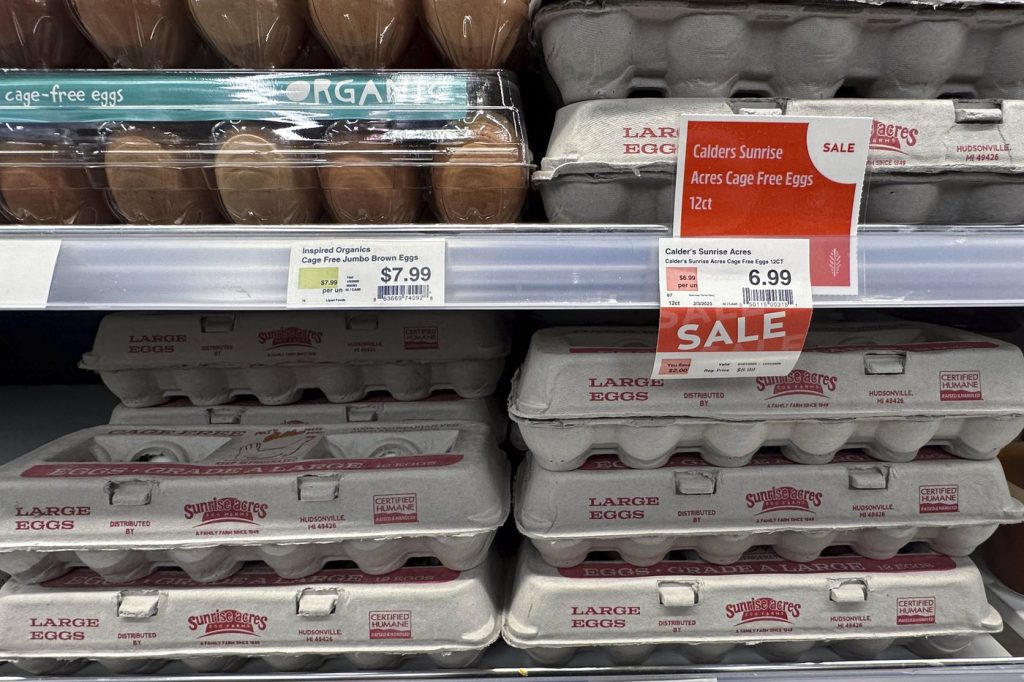Canadian egg prices stable as U.S. cracks record highs

Many customers south of the border are scrambling to get their hands on a carton of eggs as prices soar amid a devastating avian flu outbreak.
“From January 2022 to January of 2023, United States egg prices went up by 150 per cent. In Canada, over that same period of time, egg prices went up by four per cent,” explained Bruce Muirhead, chair of public policy at the Egg Farmers of Canada and a professor at the University of Waterloo.
“I’m absolutely convinced that we won’t see the price hikes in Canada that they’re seeing in the United States.”
Advertisement
Muirhead shares that the virus is particularly detrimental to the American egg system for a couple of reasons.
“Their egg farms are so large, they’ve gone under the mantra of, ‘Go big or go home.’ So, the average egg farm, in say Iowa which is a small state of about three million people, is about two million laying hens. They also have farms of six to eight million laying hens [in the U.S.]”
The size of chicken farms is a bit determinate, with Muirhead saying it’s easier for infection to spread, wiping out birds practically overnight.
“Laying hens catch it very, very easily. They don’t have the same sort of even remote resistance to avian influenza that wild birds might have. They have about 300 million laying hens in the U.S., but over the last three years, probably half of that number have had to be euthanized because of avian influenza.”
Muirhead points out that in Canada the average egg farm is about 25,000 birds.
Advertisement
“We certainly experience avian influenza outbreaks in Canada, but not nearly to the same extent as they do in the United States. Ours are family farms, for the most part. They’re fairly geographically dispersed right across the country. As a result of that, it’s almost like a natural protection against the spread of avian influenza,” he shared.
“Our system lends itself to the kinds of cooperation and cooperative mentality that doesn’t exist in the United States. Egg farmers help each other in Canada, as opposed to the much more competitive atmosphere that reigns in the United States.”
Muirhead explains that if one province is short on eggs, other Canadian farms step in to help so there’s less or no impact on consumers.
“I do think our system is much superior to theirs.”
Despite all the protections in place, one province has struggled the most with the virus.
Advertisement
“B.C. has the largest number of avian influenza infections in Canada … but it doesn’t have the same enormous impact in Canada that it would on the United States. I think our egg farmers practice biosecurity methods, which are state of the art and second to none.”
But Muirhead isn’t without concerns, as he stresses the number of outbreaks has increased over the last three or four decades.
“[It] seems to be becoming much more predominant now than it was 30 or 40 years ago. When you look at the period since 2004, all across North America, there have been outbreaks of avian influenza of one type or another periodically but when you look at 2014, 2015, 2018, then 2019, it’s becoming much more frequent and it’s something farmers really find very difficult to prevent.
“You can’t protect all of your hens, all the time.”